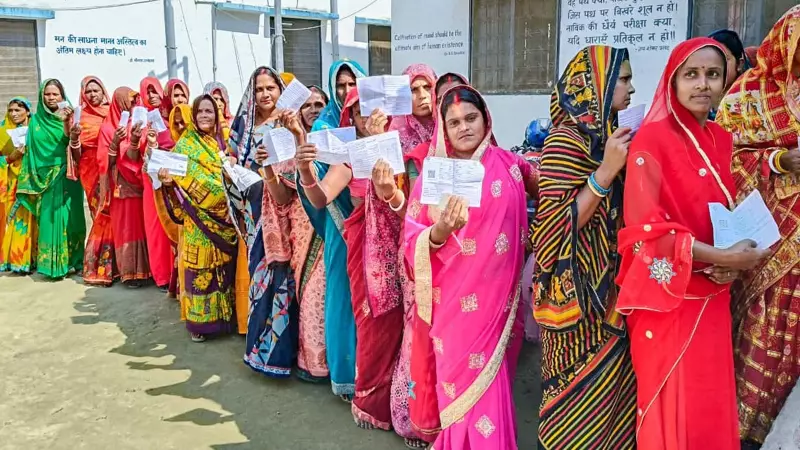
As voting in the second phase of Bihar's crucial Assembly elections concludes on Tuesday evening, political attention swiftly turns to the upcoming exit polls. However, a retrospective analysis of the previous two state elections reveals a troubling pattern of inaccurate predictions that failed to capture the actual voter sentiment.
The 2020 Election Miscalculation
During the 2020 Bihar Assembly elections, an impressive collection of eleven different exit polls collectively pointed toward a narrow victory for the RJD-led Mahagathbandhan alliance. These surveys projected the coalition would secure approximately 125 seats, just crossing the crucial majority mark of 122 in the 243-seat legislative assembly. Simultaneously, they predicted the JD(U)-led NDA would manage only 108 seats.
The actual results delivered a stunning reversal when the NDA narrowly surpassed the halfway mark, winning exactly 125 seats compared to the Mahagathbandhan's 110 seats. This represented a significant 17-seat underestimation of the NDA's performance and a corresponding 15-seat overestimation of the Mahagathbandhan's strength.
Among the various polling agencies, only three – Patriotic Voter, P-Marq, and ABP News-CVoter – came close to accurately predicting the outcome, with all three correctly forecasting an NDA majority. Meanwhile, News 18-Today's Chanakya delivered the most inaccurate projection, suggesting the NDA would win merely 55 seats while the Mahagathbandhan would secure a massive 180 seats.
The 2015 Prediction Debacle
The 2015 Bihar elections presented an even more dramatic case of exit poll inaccuracy. That year witnessed the remarkable alliance formation between traditional rivals RJD and JD(U), who joined forces with Congress to create the Mahagathbandhan. The opposing NDA coalition was led by BJP and included the undivided LJP, Rashtriya Lok Samta Party (now Rashtriya Lok Morcha under Upendra Kushwaha), and Jitan Ram Manjhi's Hindustani Awam Morcha (Secular).
An average of six exit polls conducted during that election predicted a razor-thin victory for the Mahagathbandhan, projecting they would cross the majority mark by just one seat with 123 seats, while giving the NDA 114 seats.
The actual outcome proved dramatically different as the RJD-JD(U)-Congress alliance achieved a resounding success, collectively winning 178 seats and comfortably securing an overwhelming majority. The NDA, in contrast, managed only 58 seats. This represented a massive 55-seat underestimation of the Mahagathbandhan's performance and a corresponding 56-seat overestimation of the NDA's strength.
Among the polling agencies, only CNN IBN-Axis came close to predicting the actual scale of the Mahagathbandhan's victory, projecting 176 seats for the alliance and 64 for the NDA. Despite this overwhelming mandate for the unlikely alliance of rivals-turned-partners RJD and JD(U), the coalition ultimately fractured in 2017 when Nitish Kumar returned to the NDA fold to form a new government with the BJP.
Lessons for 2025 Exit Polls
The consistent inaccuracy of exit polls in Bihar's recent electoral history raises important questions about their reliability and methodology. The 2020 polls collectively underestimated the NDA's support, while the 2015 surveys dramatically underestimated the Mahagathbandhan's performance.
As Bihar completes its second phase of voting, all eyes will be on whether polling agencies have refined their techniques to better capture the complex dynamics of Bihar's political landscape. The Seemanchal region's voter turnout will be particularly scrutinized, as this area has historically played a decisive role in determining electoral outcomes.
The historical pattern suggests that while exit polls provide immediate post-election analysis, their track record in Bihar indicates they should be viewed with cautious skepticism until the actual results are officially declared by the Election Commission.





